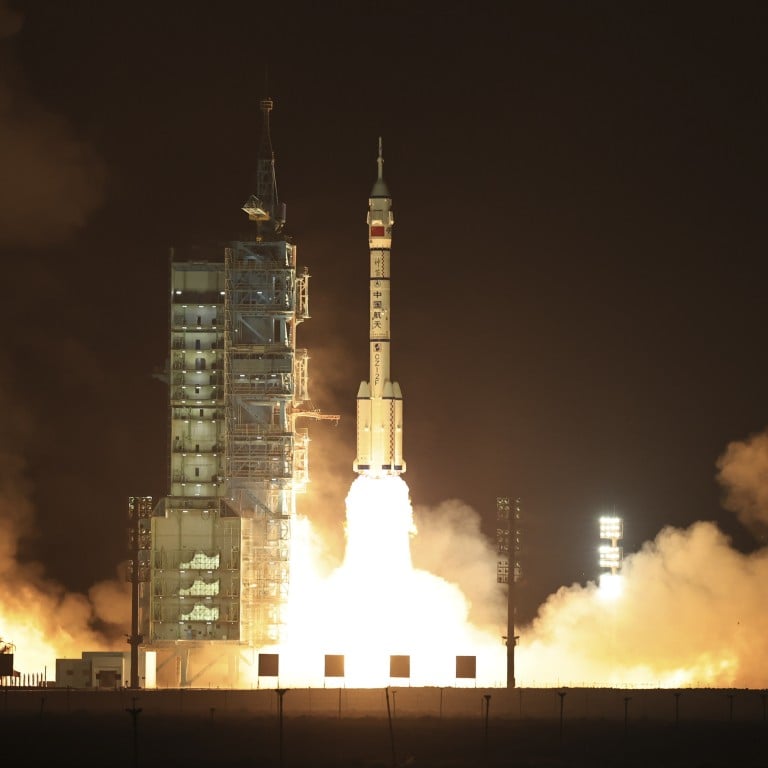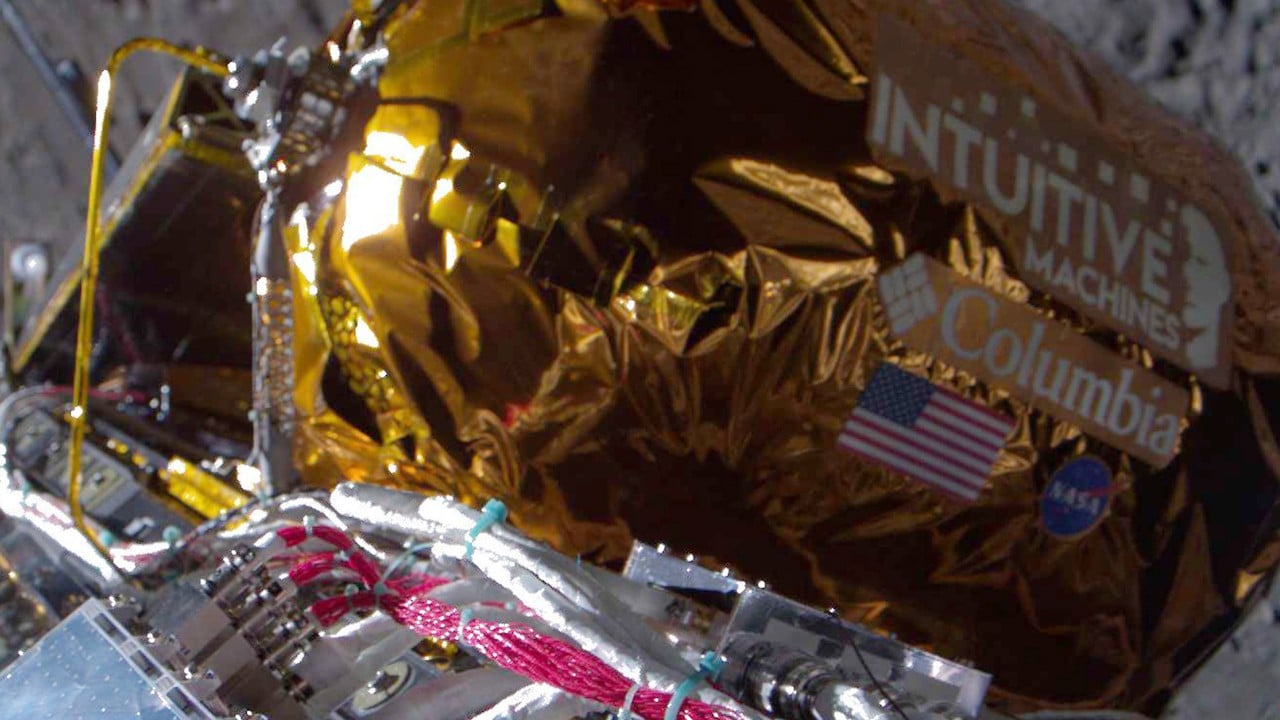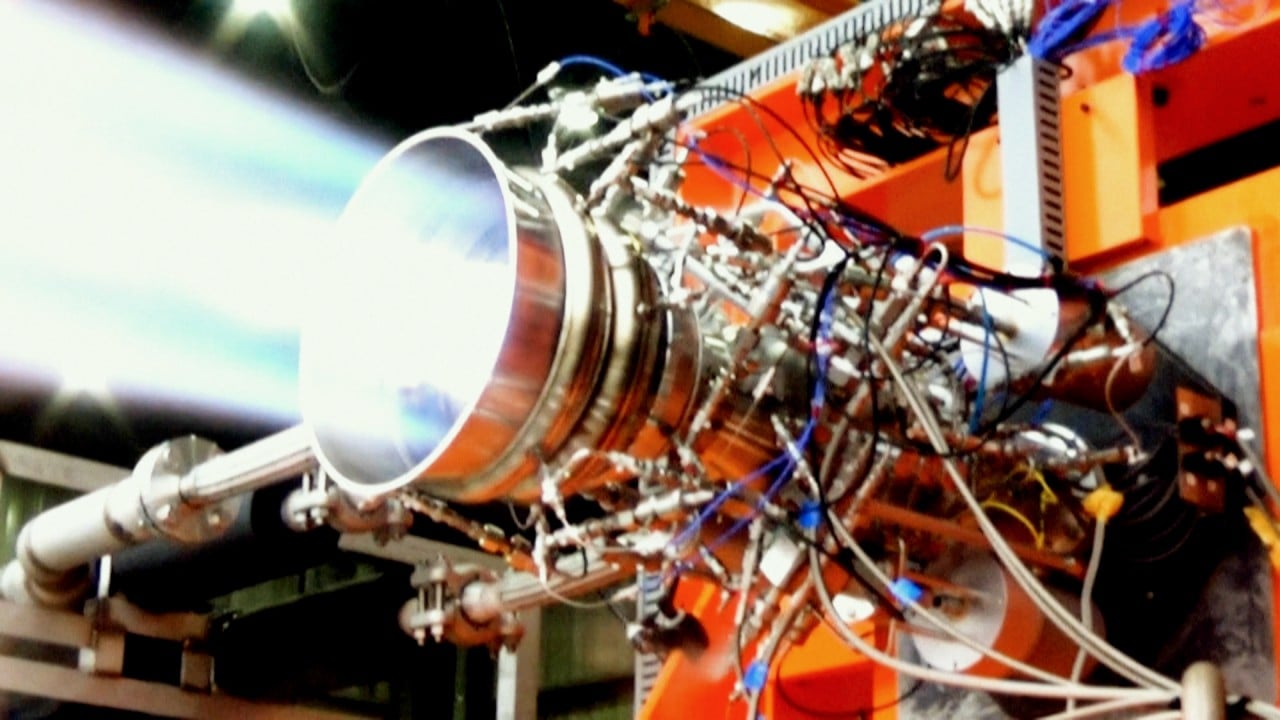
China sends trio to Tiangong space station from Gobi desert launch as authorities declare 2030 moon landing on track
- Chinese space agency deputy director declares China on track to put astronauts on the moon by 2030
- Shenzhou-18 crew expected to build a stable ‘self-circulating aquatic ecosystem’ and cultivate vertebrates in orbit: space authority
The Shenzhou-18 spacecraft successfully lifted off from the Jiuquan Satellite Launch Centre in northeastern China’s Gobi Desert at 8.59pm, the China Manned Space Agency (CMSA) announced shortly after the launch.

On board the spacecraft are mission commander Ye Guangfu, a veteran of the 2021 Shenzhou-13 mission, and crewmates Li Cong and Li Guangsu, who are both former fighter pilots and on their first space flight mission.
The trio will take about six and a half hours to arrive at Tiangong after the spacecraft reaches orbit and performs an automated rendezvous to dock with the space station some 400km (250 miles) above Earth, CMSA deputy director Lin Xiqiang told the media at Jiuquan on Wednesday.
The crew will be greeted by the three Shenzhou-17 astronauts who have lived and worked on Tiangong since October and are scheduled to return to Earth in about a week.
During the Shenzhou-18 crew’s six-month-long stay in orbit, they will mainly be tasked with conducting scientific experiments and spacewalks as well as routine maintenance and management of the space station, according to Lin.
For instance, they are expected to use zebrafish and hornwort to build a stable “self-circulating aquatic ecosystem” and cultivate vertebrates in orbit, a first for China, he said.
During the press conference, Lin also provided an update on China’s crewed lunar programme, noting that the building of systems and the timeline were on target to put Chinese astronauts on the moon before the end of the decade.
Leading scientist crucial to China’s space efforts to be expelled from top body
“Their prototype production and tests are in full swing,” Lin said.
China’s moon landing plan involves two launches of Long March 10 rockets to send three astronauts and the lunar lander into the lunar orbit separately. There, Mengzhou and Lanyue will dock and touch down on the lunar surface.
Two astronauts will spend a few hours on the moon, and then lift off to join their colleague in lunar orbit before returning to Earth.
Lin said the CMSA was working on choosing the lunar rover crew and lunar surface payloads following its call for proposals from the public – including China’s commercial space sector – last year.
Meanwhile, the United States is working to return astronauts to the moon for the first time since the Apollo Programme. Its Artemis III mission, which was previously scheduled to take off in 2025, has officially slipped to September 2026 at the earliest, Nasa said earlier this year.
The delay was caused by a number of technical reasons, including SpaceX’s outlook for building the Starship super heavy rocket, which is tasked with transferring US astronauts from the lunar orbit to the moon’s surface, as well as the company’s slower than expected development of the lunar lander.
In fact, the Artemis III mission is unlikely to happen before 2027, according to a report released by the US Government Accountability Office in December, which was compiled based on interviews with Nasa officials and industry experts.



